 Leading Blog | Posts by Month |
 Leading Blog | Posts by Month |
05.29.06

General Douglas MacArthur: The Soldier, The Gentleman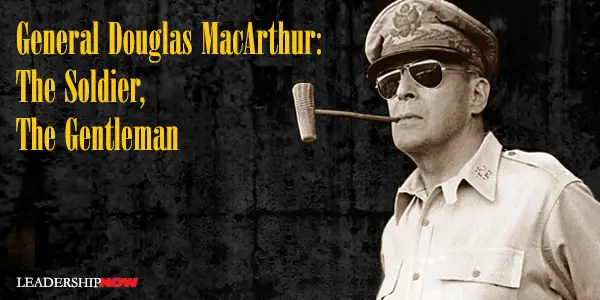
G  Major William A. Ganoe recalled this aspect of MacArthur’s character in his book MacArthur Close-Up: Much Then and Some Now (1962) in the following excerpt as cited by William Manchester: Of all his traits, Ganoe believes “the one that made the greatest impact was his unwavering aplomb, his astonishing self-mastery. I had seen men who were so placid or stolid they were emotionless. But MacArthur was anything but that. His every tone, look or movement was the extreme of intense vivacity. . . . As he talked, so he walked jauntily, without swagger. His gait and expression were carefree without being careless.” He possessed “a gifted leadership, a leadership that kept you at a respectful distance, yet at the same time took you in as an esteemed member of his team, and very quickly had you working harder than you had ever worked before in your life, just because of the loyalty, admiration and respect in which you held him. Obedience is something a leader can command, but loyalty is something, an indefinable something, that he is obliged to win. MacArthur knew instinctively how to win it.” He was, the adjutant concludes, “all contradiction. He commanded without commanding. He was both a patrician and plebeian. I could close my eyes and see him in his toga, imperiously mounting his chariot, and the next minute clad in homespun, sitting on the narrow sidewalk of Pompeii and chatting informally with a slave.”
Posted by Michael McKinney at 12:20 AM
05.27.06

What Is Your Personal DNA? We found out about this tool from Jodee Bock's blog. It is personality test which is as they claim, "free, fun, fast and accurate."  It's called personalDNA. It is actually a very quick, innovative process and was quite accurate for those in our office. It's called personalDNA. It is actually a very quick, innovative process and was quite accurate for those in our office.
A great feature on this site allows you to ask other people to assess you once you've taken the test yourself. It is enlightening to learn how those close to you see your personality by sharing results from your feedback page. You can also assess someone else's personality, and send that person the results. Take the test at: personalDNA.com.
Posted by Michael McKinney at 10:05 AM
05.25.06

Leadership is PhilosophyIn a lighthearted and engaging way, Matthew Stewart makes a case for the need to make management education a function of the philosophy department. The tragedy for those who value their reading time, is that Rousseau and Shakespeare said it all much, much better. In the 5,200 years since the Sumerians first etched their pictograms on clay tablets, come to think of it, human beings have produced an astonishing wealth of creative expression on the topics of reason, passion, and living with other people. In books, poems, plays, music, works of art, and plain old graffiti, they have explored what it means to struggle against adversity, to apply their extraordinary faculty of reason to the world, and to confront the naked truth about what motivates their fellow human animals. These works are every bit as relevant to the dilemmas faced by managers in their quest to make the world a more productive place as any of the management literature.All leadership issues are human. Leadership is not a science. It is an art. This idea of the NEW leadership is nonsense. Contexts change and will continue to change but leadership principles are constant. Leadership is about people and relationships. People have had to deal with the same issues since time began. Leadership deals with philosophical issues in ever changing contexts. While certain generalities can be made (reduced to percentages if you must) most leadership issues must be viewed more individually than generally, more philosophically than scientifically. Having laws that govern something doesn't make it a science. Beyond building skills, business training must be about values . . . But, as anyone who has studied Aristotle will know, “values” aren’t something you bump into from time to time during the course of a business career. All of business is about values, all of the time. Notwithstanding the ostentatious use of stopwatches, Taylor’s pig iron case was not a description of some aspect of physical reality—how many tons can a worker lift? It was a prescription—how many tons should a worker lift? The real issue at stake in Mayo’s telephone factory was not factual—how can we best establish a sense of teamwork? It was moral—how much of a worker’s sense of identity and well-being does a business have a right to harness for its purposes?
Posted by Michael McKinney at 12:52 AM
05.22.06

Looking for Leaders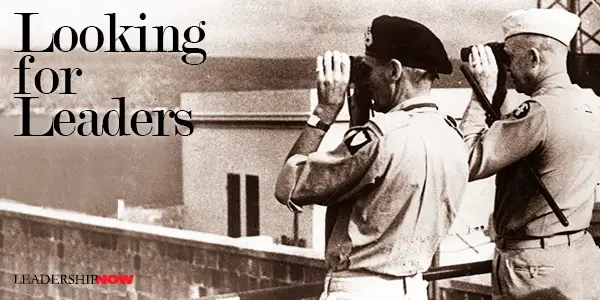
WHERE TO FIND good leaders has always been an issue. In our search, we unfortunately, find it easiest to gravitate to the role players— those people who appear to have the qualities we are looking for but really just are good at playing the “game.” They have been around long enough and possess enough ambition to get themselves noticed. These people help to produce the cynicism found in many organizations because they are not effective leaders but effective self-promoters. Once given a title they struggle to keep up because they just don’t have the substance required for the job. General Dwight Eisenhower writes about these people with fake reputations, as he calls them, to his friend General Prichard. This is excerpted from Alan Axelrod’s book, Eisenhower on Leadership: This is a long tough road we have to travel. The men that can do things are going to be sought out just as surely as the sun rises in the morning.In a letter to a friend and fellow commander Vernon E. Prichard, Ike took up the theme of leadership he had discussed in his letter to Scrappy Hartle just two days earlier. “Fake reputations,” he wrote, “habits of glib and clever speech, and glittering surface performance are going to be discovered and kicked overboard.” Those who remain are people capable of “solid, sound leadership,” possessed of “inexhaustible nervous energy to spur on the efforts of lesser men, and iron-clad determination to face discouragement, risk and increasing work without flinching.” Those who remain are the people who also possess “ a darned strong tinge of imagination—I am continuously astounded by the utter lack of imaginative thinking among so many of our people that have reputations for being really good officers.” Finally, those who escape being kicked overboard are those who are most dedicated and “able to forget . . . personal fortunes. I’ve relived two seniors here because they got to worrying about ‘injustice, ‘ ‘unfairness,’ prestige.’” Need will find leaders, but Ike counseled his friend Prichard to get a jump on need by starting to look right now. “While you are doing your stuff from day to day, constantly look and search among your subordinates for the ones that have those priceless qualities in a greater or lesser degree. . . . [Y]ou will find greater and greater need for people upon whom you can depend to take the load off your shoulders.”
Posted by Michael McKinney at 09:51 AM
05.19.06

Leadership Begins at Home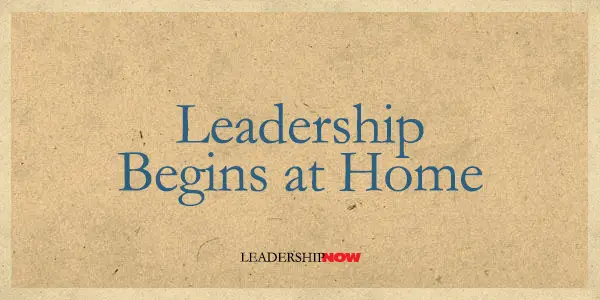
THE Nanaimo News Bulletin reports that Leonard Krog—member of the British Columbia Legislative Assembly—in a speech to the Nanaimo Chamber of Commerce stated, “Community leadership starts at home. The best leadership examples are found in the home by parents who are involved in their communities. People can do small things, like build a community park in their neighborhood, or big things like run for public office or join community groups. Be a leader in your family. That’s how you build a strong and healthy community.” Parents are the earliest and most influential influences on a child. Their examples profoundly affect the kind of leaders they become. Leadership training takes time (think quantity not just "quality") and guidance in every facet of a child’s life from early on. Additionally, leadership needs to be modeled by the parents. It helps if you view all of this in the long-term. The big picture view assists in smoothing out the immature peaks and valleys and helps keep your goals on track. Here are some (not comprehensive) ideas to think on: Take time to know your child. Working with a child’s personality, a parent needs to learn to develop that child’s individual traits and abilities and sometimes temper strengths that left unchecked would become a liability. For example, an assertive, outgoing personality is a great trait in a leader, but without self-control, it can be seen as overly aggressive and controlling.  Take the time to point out where they can learn from the example of others. Use examples and outcomes of decisions of both right and wrong approaches to situations. Teach them cause and effect. Choices have consequences. Take the time to understand what problems and issues your child is dealing with and then guide them to the right decisions by applying the right principles. By instilling principles rather than pat answers to problems, you will give them tools to work with that they can apply over and over again in their life. Take the time to praise them when they make the right choices and gently show them the choice they missed when they go astray. Give them age appropriate responsibilities and let them stand or fall on their choices. (Note: Self-esteem comes from knowing you did do or are doing the right thing and should be praised. It’s not generated from unsupported, manipulative comments designed to make kids—or anyone else for that matter—feel good.) Take the time to involve them in family activities and work. This will help them learn teamwork (sharing and considering others) and a good work ethic. Why do all this? Pat Williams (senior vice president of the Orlando Magic) in his book, Coaching Your Kids to be Leaders, quotes Jackson University football coach Steve Gilbert, I tell young people, "It feels good to be a leader!" Success and failure are part of the adventure of life. Young people need to see that good leaders are important in their community—and there are great rewards for being a good leader. Those rewards include a sense of satisfaction and a feeling that what you are doing is meaningful and significant. You don’t always win when you lead, but that’s okay. Young people should be rewarded and encouraged for stepping up and leading, no matter whether they succeed or fail.Krog added some additional thoughts that apply in any leadership training. “What is negatively affecting leadership across the country is the use of polls to gauge public opinion. Good leadership takes a longer-term view of issues that may or may not be popular. Polls force governments to make popular, short-term decisions to stay in power. And sometimes leadership involves championing ideas that are not so popular.” Of Related Interest: 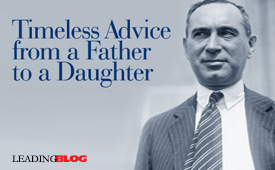 
Posted by Michael McKinney at 12:08 AM
05.17.06

Attitude of Wisdom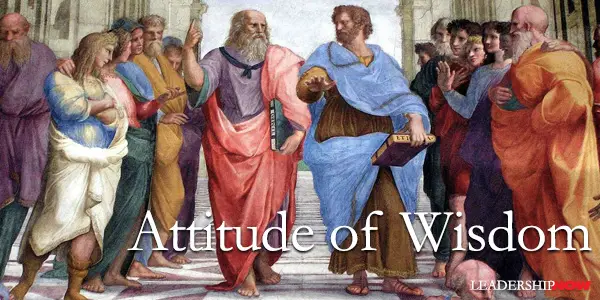
AMERICAN essayist Norman Cousins wrote, “Wisdom consists of the anticipation of consequences.” Wisdom is about the thinking through of thoughts, behaviors and actions and seeing their relationships. It is seeing how things are connected. It is easy to get so caught up in what we are doing that we operate as though we are in a vacuum. Yale University professor Robert Sternberg explained that one reason smart people are sometimes inexplicably stupid is that they think they have overcome the problem of consequences. Understanding how everything is connected is a daunting task, but it shouldn’t cause us to stop dead in our tracks full of indecision. We still have to function. Professors Pfeffer and Sutton suggest in their book Hard Facts, that we must travel through life with an attitude of wisdom. That attitude is described as the ability to act with knowledge while doubting what you know. They point out that this attitude or approach is the single most important quality that a leader, advisor, or team can have for practicing evidence-based management. This attitude enables people to act on what they already know while at the same time doubting what they know. It means they can do things now, as well as keep learning along the way. It implies a certain degree of humility to make it work. You really have to be able to get out of your own way. Professor Karl Weick said, “Argue like you’re right, but listen as if you’re wrong.” From Hard Facts: Practicing evidence-based management means adopting beliefs and designing settings that enable people to keep acting with knowledge while doubting what they know, and to openly acknowledge the imperfections in even their best ideas along the way. A lot of experience often holds people back from adapting this attitude. An old example holds true here: A person may say, “I have 20 years of experience.” But it’s not 20 years of experience. It’s 1 year repeated 20 times. That is to say, we live our lives in such a way that we aren’t really learning. We’re repeating. While wisdom requires that we arrange what we observe and know, and create meaning from it, it also requires that we consider what we need to unlearn as well.
Posted by Michael McKinney at 12:27 AM
05.15.06

Humility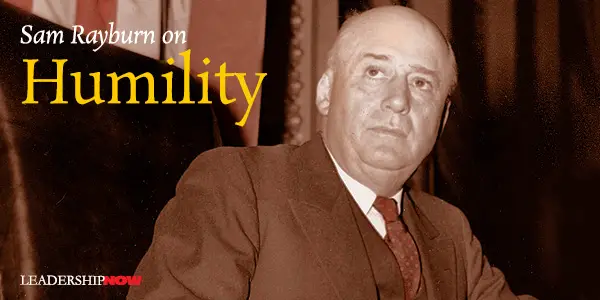
JUST OVER 60 years ago in April 1945, Harry Truman was thrust into the presidency by the death of FDR. On his first day in the White House, Sam Rayburn (1882-1961) then Speaker of the House, came over to deliver some sage advice. "I have come down here to talk to you about you," Rayburn began. "You have got many great hazards, and one of them is in this White House. I have been watching this thing a long time. I have seen people in the White House try to build a fence around the White House and keep the very people away from the President that he should see. That is one of your hazards. The special interests and the sycophants will stand in the rain a week to see you and will treat you like a king. They'll come sliding in and tell you, you're the greatest man alive—but you know and I know you ain't." 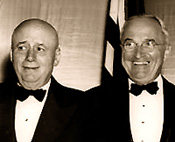 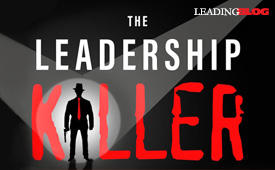 
Posted by Michael McKinney at 12:37 AM
05.12.06

Asset-Based Thinking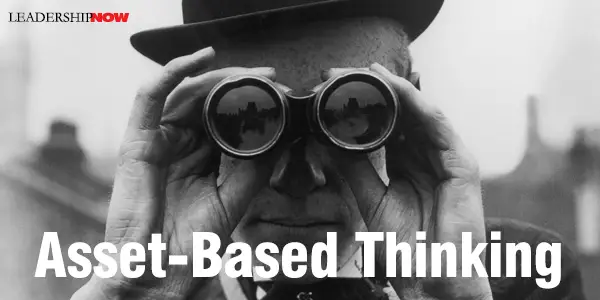
DOUGLAS RUSHKOFF wrote, "Instead of focusing on what we still lack, we must take stock of what we already do have in terms of resources, abilities, and pure will." This is the essence of asset-based thinking. It's not to be confused with the head-in-the-sand everything-is-wonderful way of thinking. That's the other ditch of typical one-dimensional thinking. It’s not about finding everything that’s wonderful around you to create a false sense of euphoria. It’s about asking, “What are the assets here?” What is working?” and how can I use these things — how can I leverage these things — to reach my goals. What is being encouraged here is reality-based multidimensional thinking. It demonstrates that there is another way of thinking about or looking at most every situation. Through brilliant design (as shown below), Change the Way You See Everything illuminates these concepts. Authors Kathryn Cramer (psychologist) and Hank Wasiak (advertising) ask you to image the seismic shift that would occur if people just focused their attention on opportunities rather than problems, strengths more than weaknesses and what can be done instead of what can't. When you decrease your focus on what is wrong (deficit-based thinking) and increase your focus on what is right (Asset-Based Thinking), you build enthusiasm and energy, strengthen relationships, and move people and productivity to the next level. We all need this book. Despite the fact that this is a simple — yet life-changing concept — it doesn't make it any easier to execute these ideas in our lives or organizations. Unfortunately, the fact is our default setting is toward deficit-based thinking. We gravitate towards the negative, towards what’s not working. This mode of thinking and viewing the world holds us back. Deficit-based thinking is driven by fear. Asset-based thinking is driven by desire.
This is an important book. It is both mentally and emotionally engaging. Get this book for yourself and anyone you care about. Asset-based thinking is the foundational step that you need to put into place in order to build a success system that has a sense of personal responsibility, creativity and resilience.

Posted by Michael McKinney at 01:11 AM
05.10.06

The Managerial Moment of Truth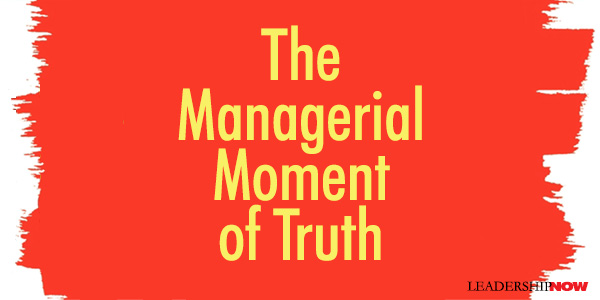
In The Managerial Moment of Truth, authors Bruce Bodaken and Robert Fritz claim that “truth is one of the most important competitive advantages there is in building a business.” It’s vital for creating an organization of learning individuals. Knowing what’s going on in reality gives organizations a better chance of success. “Without perceiving reality, it is next to impossible to succeed because invariably decisions are made in a vacuum.” The phrase managerial moment of truth refers to that moment when the leader has the choice to ignore or call attention to something that has occurred. They observe, “Too often, managers think they have only one of two unpleasant choices: to have a contentious confrontation or to avoid addressing the situation. Whichever path they choose, real or lasting change rarely happens.” They caution that telling the truth isn’t the same as “spouting our opinions or sharing our feelings. Groups that really tell each other the truth are the ones that ask each other questions, seriously seek to understand opinions that are different than their own.” The authors developed a practical procedure that has been used successfully at Blue Shield of California where Bodaken is Chairman, President and CEO. It's a way of telling the truth and getting to the bottom of an issue without hurting people. The technique has four steps: 1. Acknowledge the Truth — Entails the awareness that there is a difference between what you expected and what was delivered and the decision to do something about it.
The idea is to deal with these moments while they are small issues and before there is a need for a full-blown confrontation. Truth telling is a powerful agent of change. This system gives people the best chance to learn in a positive and safe environment. In the end facing reality is a lot easier than all the fancy footwork required in avoiding it. Great leaders are also great mentors. Greatness is hard to achieve without a substantial amount of learning built into the fabric of the organization. Mentorship is the most direct path to learning because it is done within the context of real work set against the realities of the world. 
Posted by Michael McKinney at 12:19 AM
05.08.06

Integrity is the Key to Success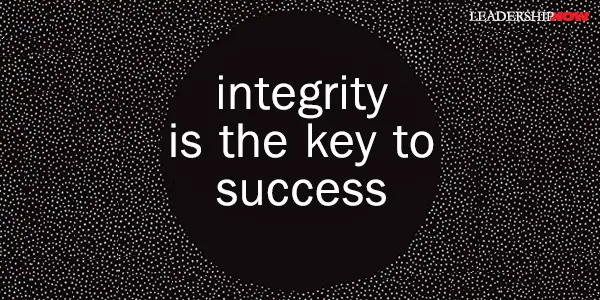
FOR THOSE WHO WISH to increase their performance or to help others to do so, Dr. Henry Cloud believes integrity is the key. By integrity, he means being a whole, integrated person. It’s about wholeness. It means a person who is "running on all cylinders." It’s more than simple honesty and ethics. In his book, >Integrity: The Courage to Meet the Demands of Reality, he focuses on the essential need for the character development necessary to make a person or an organization successful. The concept is built upon six traits of integrity: 1. Establishing Trust. This is the ability for someone to get outside their reality, agendas and concerns and connect with, understand, and work with the realities and concerns of the other person or people. 2. Orientation Toward Truth. This gets at the ability to operate in reality and deal with it. 3. Getting Results. Beyond a work ethic and working hard this trait is about how a person is put together that actually causes hard work and effort to end up in real results. 4. Embracing the Negative. Those who succeed are those that understand that life is about solving problems. They seek out the problems and develop the ability to solve them. The ability to move something forward when something bad happens. 5. Orientation Toward Growth. Not the desire to maintain but a real desire to grow and increase. 6. Orientation Toward Transcendence. The ability to see the big picture and to serve something larger than yourself. Any of these areas can be developed, but growth won’t happen because you feel you ought to do this. “Ought “ is not a good motivator. So how do you change? Cloud suggests: People change when they play the “movie,” which is to take a hard reality look at your life and work, then play that reality forward to see if you like the way the future movie of your life and career plays out. In that way, people begin to experience the future losses, rewards, and consequences right now and get with reality. When you look, for example, at your present performance, and the things that you are not getting, and then you realize that if you continue to do the same things expecting different results, you will never get what you want, you will change. 
Posted by Michael McKinney at 04:00 AM
05.05.06

Fire Someone Today
Fire Someone Today sounds like a book of contrary advice for bosses. Surprisingly, it is a book full of down-to-earth, practical, and tested advice for leaders seeking to better their company and the lives of those who work for them. It is written in a conversational and helpful tone by Bob Pritchett, President and CEO of Logos Research Systems (makers of Bible Software). Firing someone is never easy. Consequently, we often find ourselves doing everything we can to avoid facing the issue. And the reasons we come up with sound pretty good and effectively forestall the inevitable. However, Pritchett explains these are not just bad reasons; these are selfish excuses. Compassion is caring about others, but retaining the employee who should be fired is all about caring for ourselves—it is never about the employee. We want to protect our investment, our presumptuous feeling of parental responsibility, our time and energy, even our reputation for "being nice." If employees quit or were hit by the proverbial bus, we would find a way to address any real issues related to their sudden absence—we would have to, because their departure date would be out of our control. Pritchett reminds us that firing the employee should be a last resort after trying to retain the person in a different position (in reality, not in name only). But if it has to be done, he explains how to do it right. When we don’t fire employees who need to be fired, we aren't doing anyone any favors. When we don’t fire someone we should, our inaction is malicious. We are hurting our organization and wasting the employee’s time on a job with no future. Our motivations are most likely selfish; at the very best, we are just being stupid. Some of the other great and immediately practical advice: Nobody Needs an Optimistic Accountant: You should be optimistic about your business. Your salespeople should be optimistic about your business. Your parents, your children, your vendors, and your employees should be optimistic about your business. You do not want any negative, pessimistic, whining, cry-baby Chicken Littles on your team. Except for your accountant. Fire Someone Today will help you too look at business problems through another lens and show you how to deal with them head-on in constructive and profitable ways. 
Posted by Michael McKinney at 06:59 AM
05.03.06

How to Craft a Winning Speech
PROFESSIONAL speechwriter Andrew Wilson offers some tips for crafting a winning speech. First, three cardinal rules: 1.Speak from the heart. Talk about the things you really know and care about.
Next are some techniques that are useful in thinking through a speech from start to finish: 1. Open with a bang. Don’t waste time with niceties. Aim to capture your audience with your first words.
Posted by Michael McKinney at 07:22 AM
05.01.06

Appraising Business Ideas
WE don’t know what we don’t know, so we have to proceed with our minds open and be willing to modify what we think we know in the face of credible data. How do we know when we have come across credible data? In the Stanford Social Innovation Review, Hard Facts authors Jeffrey Pfeffer and Robert Sutton, presented some rules to keep in mind when evaluating or developing business ideas:

Posted by Michael McKinney at 12:00 AM
|
BUILD YOUR KNOWLEDGE


How to Do Your Start-Up Right STRAIGHT TALK FOR START-UPS 
Grow Your Leadership Skills NEW AND UPCOMING LEADERSHIP BOOKS 
Leadership Minute BITE-SIZE CONCEPTS YOU CAN CHEW ON 
Classic Leadership Books BOOKS TO READ BEFORE YOU LEAD |
|